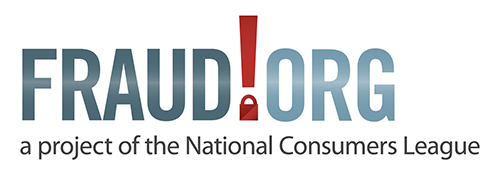Bogus Internet merchandise top 2015 scams list – Fraud.org

Every year, Fraud.org compiles the top ten scams reported to us by consumers and publicly releases the list to help educate consumers and prevent future fraud. Based on an analysis of more than 10,000 consumer complaints submitted to Fraud.org in 2015, Fraud.org is warning consumers of the latest worst offenders: phony Internet merchandise sales.
Internet merchandise scams typically involve an online ad for goods, such as designer apparel, electronics, and similar high-end items, priced far below their retail value. When a consumer tries to purchase the item, it either never arrives, or a different, inferior, or counterfeit item arrives in its place. 2015 was the third year in a row that Internet merchandise scams topped the list of complaints.
Examples of Internet merchandise sales scams:
Anna, California. Paid $3,500 for a used Honda. The seller spoofed a third-party payment site and requested the funds in the form of iTunes gift cards. The car never showed up.
John, Indiana. Paid $600 for a Rottweiler puppy named Roscoe. Roscoe never arrived.
Dan, a farmer from Germany. Lost more than $22,000 being defrauded by a company posing as suppliers of animal feed. Goods were never shipped.
Jennifer, Texas. Bought nearly $400 worth of non-existent airline tickets through a fake site.
Irene, Chicago. Ordered NFL jerseys through a website claiming to be an official NFL gear vendor. What arrived were clearly low quality knock-offs.
“The convenience of online shopping is simply unbeatable for many consumers,” said John Breyault, who directs Fraud.org. “Obviously there are plenty of legitimate companies online, but there are also fraudulent sellers out to cheat consumers—and they are very good at what they do.”
Breyault offered the following advice for practicing safe online buying habits. (Even more tips available here.)
- Do a price-check for similar merchandise before trusting an unknown online retailer, especially one advertising on Craigslist. If the price listed is far below traditional online retailers (think Amazon, Best Buy, Zappos) for a piece of popular merchandise (such as wireless phones, game consoles, sneakers, or designer clothing), the “deal” could easily be a scam.
- Know who you’re dealing with. If the seller is unfamiliar, check with your state or local consumer protection agency and the Better Business Bureau. Some Web sites have feedback forums, which can provide useful information about other people’s experiences with particular sellers. Get the physical address and phone number in case there is a problem later.
- Look for information about how complaints are handled. It can be difficult to resolve complaints, especially if the seller is located in another country. Look on the Web site for information about programs the company participates in that require it to meet standards for reliability and help to handle disputes.
- Pay the safest way: Credit card. If a fraudulent transaction is disputed promptly, chances are the consumer won’t be on the hook for the fraud thanks to banks’ zero liability guarantees and federal consumer protections.







